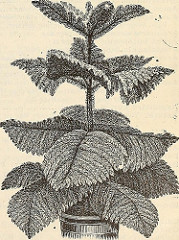Green leafy vegetables like Spinach, Lettuce, Coriander, Rocket, Parsley, Bok Choy, Fenugreek, Leek, Watercress, fresh herbs etc are hard to store fresh for a long time. When you buy leafy vegetables pay attention to buy fresh and crispy once.
Wrap them in a paper towel to observe excess moisture and water from the leafy veggies. If leafy vegetables are too moist they tend to rot very quickly.
Make sure not to wash leafy veggies before you wrap them in the paper towel. You can always wash them properly before you eat them or use them for cooking.
Once you are done with wrapping, put each of them in separate plastic containers in the fridge. This will make leafy vegetables last for a longer period than normally expected.
Never store fresh green leafy vegetables in freezer, they will lose their aroma, freshness and become watery. Turnip roots store well in the refrigerator, but the greens, like most leafy vegetables, must be eaten quickly or canned or frozen to preserve freshness.
Both the turnip’s root and greens may be consumed. One cup of boiled turnip roots contains 34 calories, 0 g of fat, 8 g of carbohydrates, 3 g of fiber and 1 g of protein.
One cup raw turnip greens contain 18 calories, 0 g of fat, 4 g of carbohydrates, 2 g of fiber and 1 g of protein. One cup of boiled turnip greens contains 29 calories, 0 g of fat, 6 g of carbohydrates, 5 g of fiber and 2 g of protein.
One cup of canned turnip greens contains 27 calories, 0 g of fat, 4 g of carbohydrates, 2 g of fiber and 2 g of protein. One cup of frozen turnip greens contains 48 calories, 1 g of fat, 8 g of carbohydrates, 6 g of fiber and 5 g of protein.
Bok Choy, sometimes called Peking cabbage, is a type of leafy green cabbage found in Asian dishes. It is an extremely healthy vegetable, full of beta-carotene, calcium and foliates.
Bok Choy can be served cooked or raw. The plant can be stored like any other leafy vegetable, like lettuce or spinach.
Cut the root of the Bok Choy off, where the leaves join together at the bottom. Keep the white stems of the plant as you will most likely be using both parts of the leaf in your recipe.
Fill a large bowl with cool water and soak the leaves for about 30 seconds. Swish the leaves around in the water to remove any dirt.
Remove the leaves of the Bok Choy and gently shake off excess water. Blot them dry on paper towels.
Roll out another section of fresh paper towels. Place the leaves on the paper towel in a single layer and roll them up.
Store the rolled leaves in a plastic bag. The produce bag from the grocery store is fine to reuse for this.
Place the bag in your refrigerator crisper. The Bok Choy should stay fresh for five to six days.
Purslane is a leafy vegetable that grows all over the world. Although it is commonly considered to be a weed, it is popular in some Mediterranean–particularly Greek–cooking.
It works nicely in salads when fresh, as a side dish when lightly sauteed and when tossed in soups. Pluck all the purslane leaves off of the stems by grasping the top of a branch in one hand and sliding the thumb and forefinger of your other hand down the stem.
This will rip most of the leaves off in one smooth motion. Cut the stems into 2-inch pieces with kitchen shears.
Discard the roots, as they are not edible. Put the leaves and stem pieces in the bowl of a food processor.
Process until the leaves and stems are chopped, as for a pesto. Drizzle in a little water if the leaves are sticking to the sides of the bowl.
Purslane leaves have a lot of gooey, mucilaginous juice, which can make them a little sticky. Measure 1 tsp. and 1 tbsp. portions of purslane puree and pack them into the segments of an ice cube tray and freeze.
Place frozen puree cubes out of tray and quickly transfer to small plastic bags for storage in the freezer. Pack purslane puree into small freezer-safe containers for use in larger amounts.
Jack R. Landry is an accomplished expert in family preparedness and has been giving seminars for over 15 years. He recommends that everyone have on hand an long term food storage in case of any emergency or disaster.
Contact Info:
Jack R. Landry
JackRLandry@gmail.com
http://www.foodinsurance.com
Find More Buy Vegetables Online Articles

